South Korea 2012 "The Age of Dinosaurs - Cretaceous Period"
| <prev | back to index | next> |
| Issue Date | 08.08.2012 |
| ID | Michel: 2895-2898; Scott: 2389a-d; Stanley Gibbons: 3219-3221; Yvert et Tellier: 2685-2688; Category: pR |
| Design | Jiwon MO |
| Stamps in set | 4 |
| Value |
Won 340 - Pachycephalosaurus Won 340 - Tyrannosaurus Won 340 - Oviraptor Won 340 - Protoceratops |
| Emission/Type | commemorative |
| Issue place | Seoul |
| Size (width x height) | stamps: 50mm X 33mm, Sheet: 250mm x 150mm |
| Layout | Sheet of 12 stamps |
| Products | FDC x1 |
| Paper | White Unwatermarked |
| Perforation | 13 |
| Print Technique | Offset, six colors |
| Printed by | Korea Minting and Security Printing Corporation |
| Quantity | 408.000 stamps each |
| Issuing Authority | Korea Post |
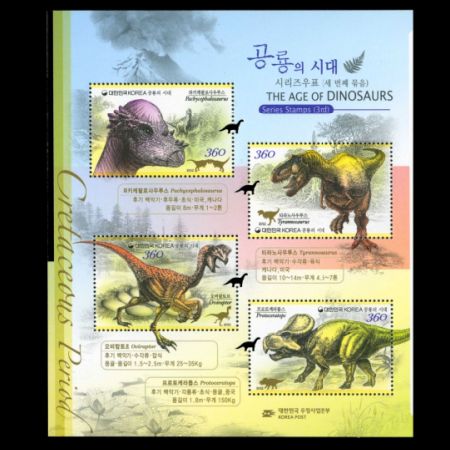
On August 8th 2012, Korean Post issued the last set "The Age of Dinosaurs" of the three-year series, started in 2010. This series covers Mesozoic Era and features dinosaurs found around the world. Every issue show four dinosaurs and cover one period of the Mesozoic Era:
- "Triassic Period" - 05.08.2010
- "Jurassic Period" - 11.08.2011
- "Cretaceous Period" - 08.08.2012
As the third installment of The Age of Dinosaurs Series Stamps, Post of Korea introduces the Cretaceous dinosaurs of the Mesozoic Era. The Cretaceous Period, the last period of the Mesozoic Era, refers to about 80 million years spanning from about 145 million years ago to 65 million years ago. During this period, a wide diversity of animals such as ammonites, dinosaurs, and birds, prospered with angiosperms.
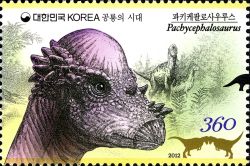 |
| Pachycephalosaurus dinosaur on stamp of South Korea 2011, MiNr.: 2895, Scott: 2389a. |
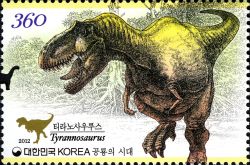 |
| Tyrannosaurus dinosaur on stamp of South Korea 2010, MiNr.: 2896, Scott: 2389b. |
Tyrannosaurus as a carnivorous dinosaur of the late Cretaceous Period, it is one of the most frightening and fiercest dinosaurs, as indicated by its name which means tyrant lizard. It is easily distinguished with anatomical features fit to attack and dominate other dinosaurs such as sharp, cone-shaped teeth as long as 20 cm, saw-like blades both in front and back of the teeth, big and long hind legs, and sharp claws. Tyrannosaurus lived in USA and Canada, grew up to 10~14 m long and weighted 4.5~7 tons.
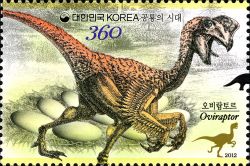 |
| Oviraptor dinosaur on stamp of South Korea 2011, MiNr.: 2897, Scott: 2389c. |
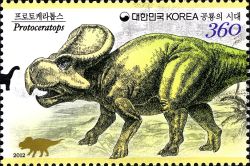 |
| Protoceratops dinosaur on stamp of South Korea 2010, MiNr.: 2898, Scott: 2389d. |
Protoceratops as an herbivore of the Late Cretaceous, Protoceratops is characterized by a large skull with a frill comparable to its body size. Its body was bulky like a large pig, showing a primitive form. It also had a beak much like that of a parrot. Equipped with a strong and hard beak with sharp teeth, it is assumed to have been able to masticate plants very well. Protoceratops lived in Mongolia and China, was 1.8 m long and weighted 150 kg.
Products and associated philatelic items
| FDC | First-Day-of-Issue Postmark | |
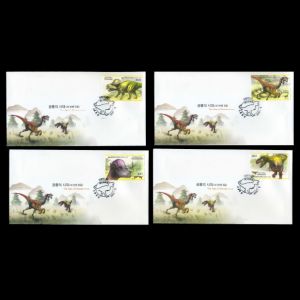 |
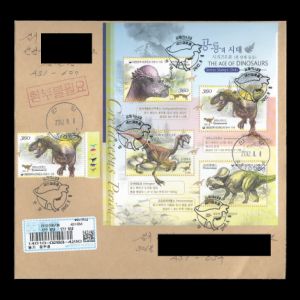 |
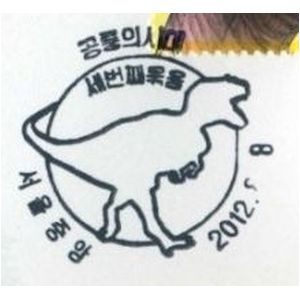 |
| The reverse side of the FDC contains technical details about the issue. | ||
| Mini-Sheet | Maxi Cards | Boklet |
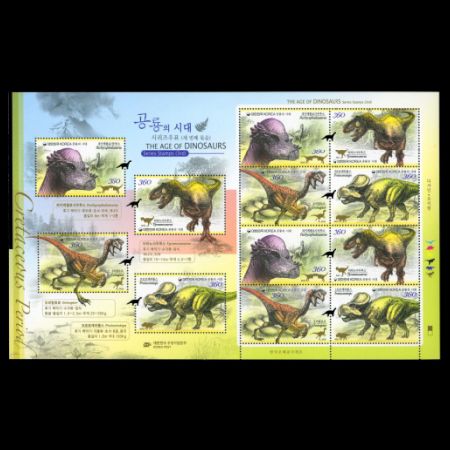 |
 |
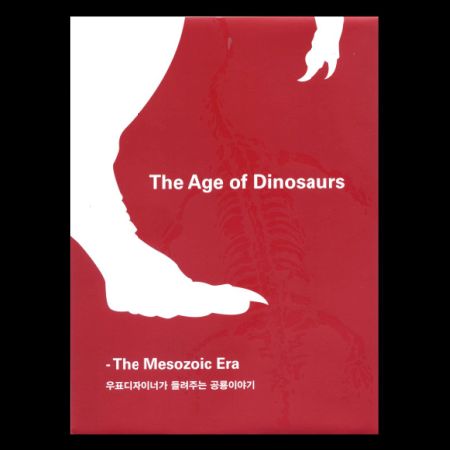 |
| Example of circulated covers | ||
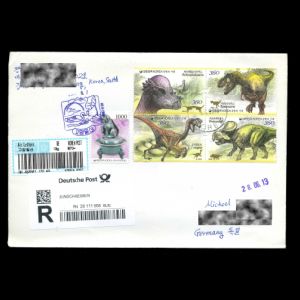 |
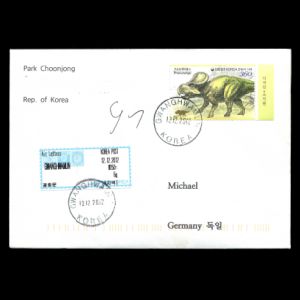 |
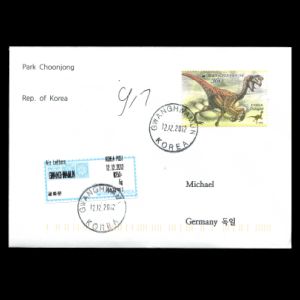 |
References:

|
- Technical details and short press releases:
Korean stamp postal services, colnect.
Acknowledgements:
- Many thanks to Dr. Peter Voice from Department of Geological and Environmental Sciences, Western Michigan University, for review of a draft of this article.
| <prev | back to index | next> |